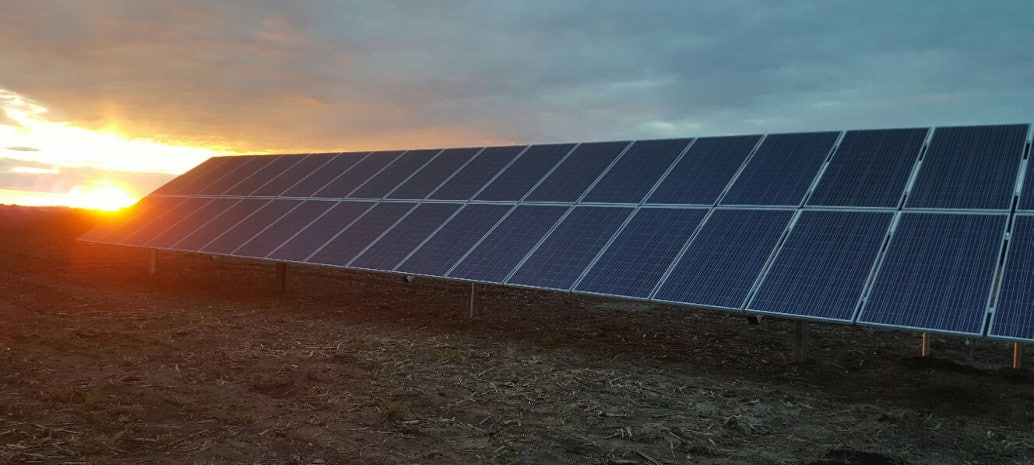The Illinois Power Agency (IPA) posted its Renewable Energy Credit (REC) prices in a compliance filing on June 4, providing another key piece of information for solar developers preparing for the expected boom of the state’s solar market. The filing provides increased certainty of a critical revenue source for these developers, technically considered “approved vendors” under IPA parlance.
There were three changes from the previous REC schedules. The first was the introduction of a new size category of co-located systems from 2 MW to 4 MW (all capacity figures are in AC). The Adjustable Block Program REC rates above 2 MW are about 9-10% lower than systems of smaller capacity. Different prices are provided for REC Block 1 in Group A, which refers to systems installed in the service area of Ameren and related utilities in the MISO system, versus Group B which covers the service area of ComEd and related utilities in the PJM system.
REC prices for Group A Distributed Generation range from $85.10 for systems under 10 kW to $43.42 for systems 500 kW to 2 MW (REC prices are on a per megawatt-hour basis). Group B prices start at $72.97 and fall to $44.64 for systems of the same capacity. Community Solar system prices for Group A range from $96.12 to $47.03, Group B $91.89 to $42.59, the lower price now being the co-located 2 MW to 4 MW systems.
The Illinois Solar For All Program, intended for households under 80% of median income as well non-profit and public facilities, offers higher REC values. Systems serving single family (1-4 unit) buildings for Group A range from $143.09 for up to 10 kW systems, down to $80.69 for 500 kW to 2 MW systems, Group B ranges from $118.20 to $65.92. For multi family buildings of 5 or more units, the Group A range is $117.62 to $65.32, Group B $118.20 to $65.92.
Low-Income Community Solar Project Initiative prices range from Group A’s $121.99 for 10kW or less down to $64.88 for over 2 to 4 MW. Group B’ incentives are $119.55 down to $62.30 for the same sizes. Incentives for Non-Profit and Public Facilities for Group A range from Group A’s $155.87 for up to 10 kW down to $91.31 for over 500 kW to 2 MW systems, Group B from $156.57 to $92.04.
The Community Solar Subscriber Participation Adjustment, meant to encourage customers under 25 kW capacity was unchanged. Less than 25% small subscriber participation gets no additional incentive, 25-50% participation gets an additional $11.17 REC for Group A, $10.88 for Group B, over 50% to 75% is $22.34 for Group A and $21.77 for Group B, over 7% $33.51 and $32.65 respectively.
The competition is expected to be fierce for approved developers as projects need to have completed or be well along in interconnection, permitting, financing and subscriptions this summer and early fall for the fall auctions. While there is no public or formal posting of applications in the interconnection pipeline, there are estimates that the pipeline of projects in ComEd’s service area is larger than 750 MW. Ameren Illinois estimates are not known. Even with a number of these pipeline applications falling by the wayside, it is likely there will be more projects than available funding, with the specter of eligible projects being awarded by a lottery.
The Illinois Solar Program continues checking off the boxes to wider implementation. A separate clearinghouse website called solarinthecommunity.com that will have information posted by developers, subscribers and community groups is expected to go live in the coming days. The IPA is expected to announce their selection of Program Administrators for the Adjustable Block and Illinois Solar For All Programs by the end of June. These administrators will carry out the details of the programs under IPA oversight, including approved vendor management, standard offer document development, income verification, consumer protection and other functions.
One benchmark that the IPA used in determining REC prices was using the Cost of Renewable Energy Spreadsheet Tool (CREST) from the U.S. Department of Energy’s National Renewable Energy Laboratory. The CREST data, from the first quarter of 2017, provides a benchmark of PV installation costs, shown in watts AC. Residential installations up to 10 kW are benchmarked at $3.85 per watt, non residential systems at $3.33/watt up to 25 kW, $2.81/w up to 100 kW, $2.57 up to 200 kW, $2.47 up to 500 kW, $2.43 up to 2 MW and $1.95 up 40 4 MW.
The IPA in its plan realized that policy and market vicissitudes will occur, whether it’s a trend of declining system installation costs, upward price pressure from tariffs or, more recently, the factor of a larger than expected drop in Chinese module prices which would impact the global market. Thus the agency has the option of changing REC prices up to 25% without requiring Illinois Commerce Commission review and approval.
This content is protected by copyright and may not be reused. If you want to cooperate with us and would like to reuse some of our content, please contact: editors@pv-magazine.com.








Hi,
I am Shawn Hiromori from Osaka Gas USA in NY.
Thank you for your detailed information on Adjustable Block and Illinois Solar For All programs.
I am wondering if who can win this auction this fall. Is the developers that proposes low price? For Adjustable Block, Rec Prices Blok1 in Group A, Does Developer who proposes 86.0$/REC win against developer who proposes 87.0$/REC? Also, are there any cases that developer propose lower price than the price shown table in page 1, 2 as below?
https://www2.illinois.gov/sites/ipa/Documents/2018ProcurementPlan/ComplianceFilingMemorandum.pdf
Thanks,
Shawn
Shintaro Hiromori(Shawn)
広森 紳太郎
Osaka Gas USA
1 North Lexington Avenue Suite 1400
White Plains, NY 10601
Tel 914-253-5504
Mobile 914-325-9524
Fax 914-328-4430
shiromori@osakagasusa.com